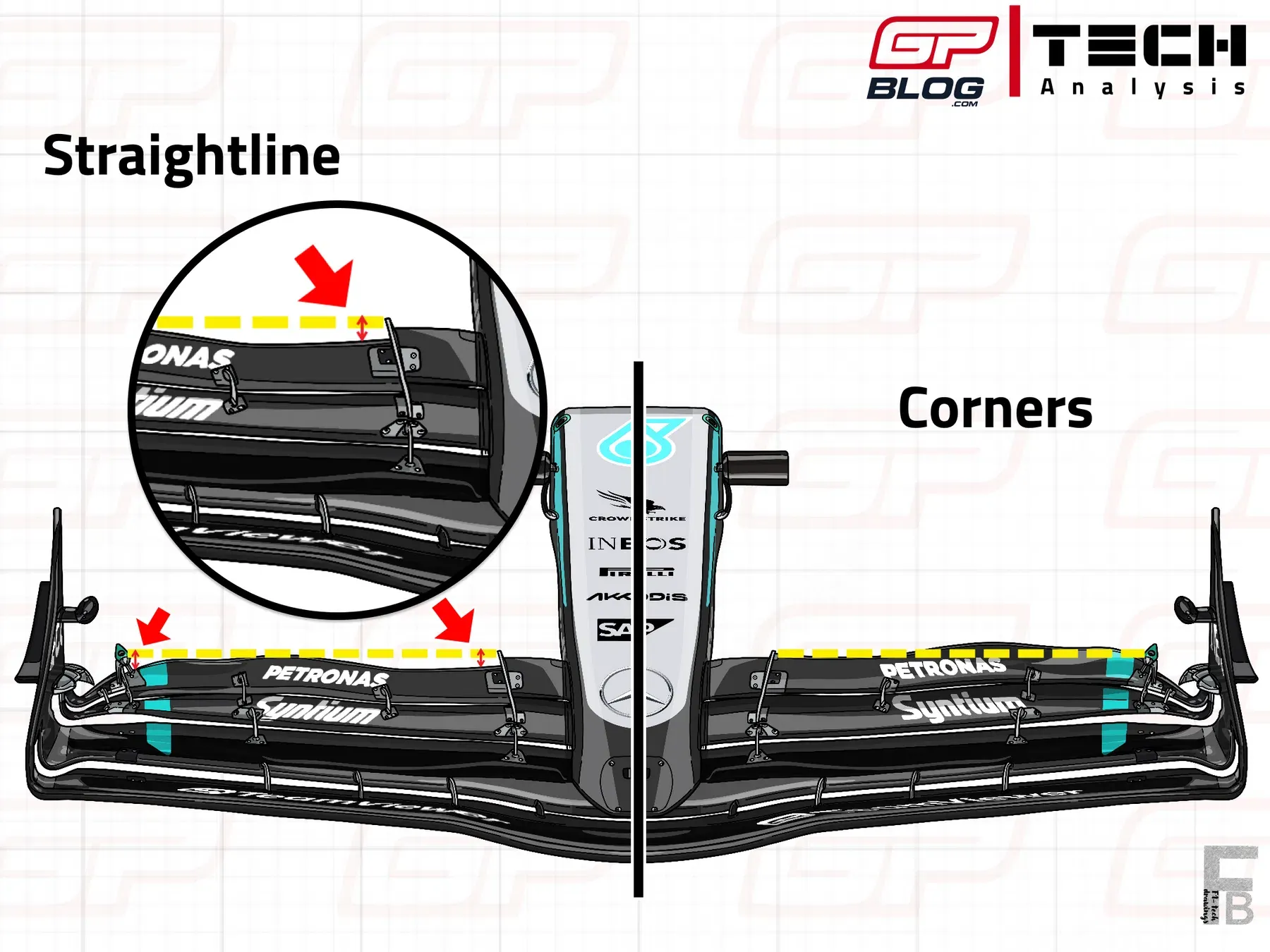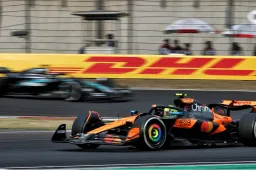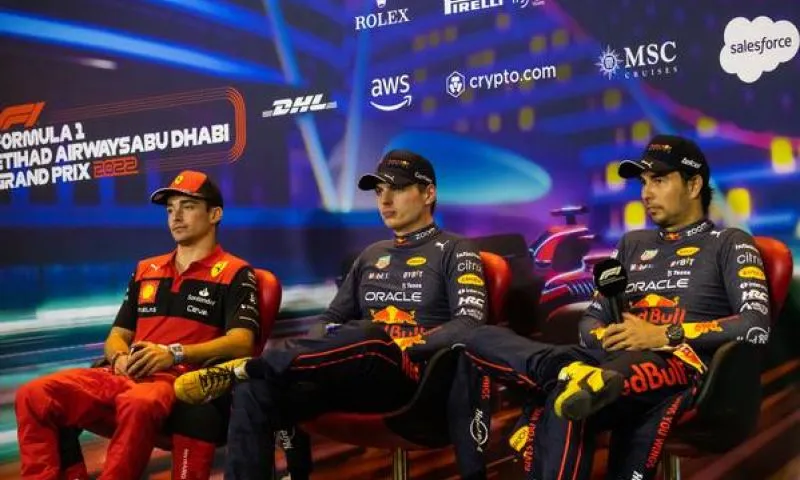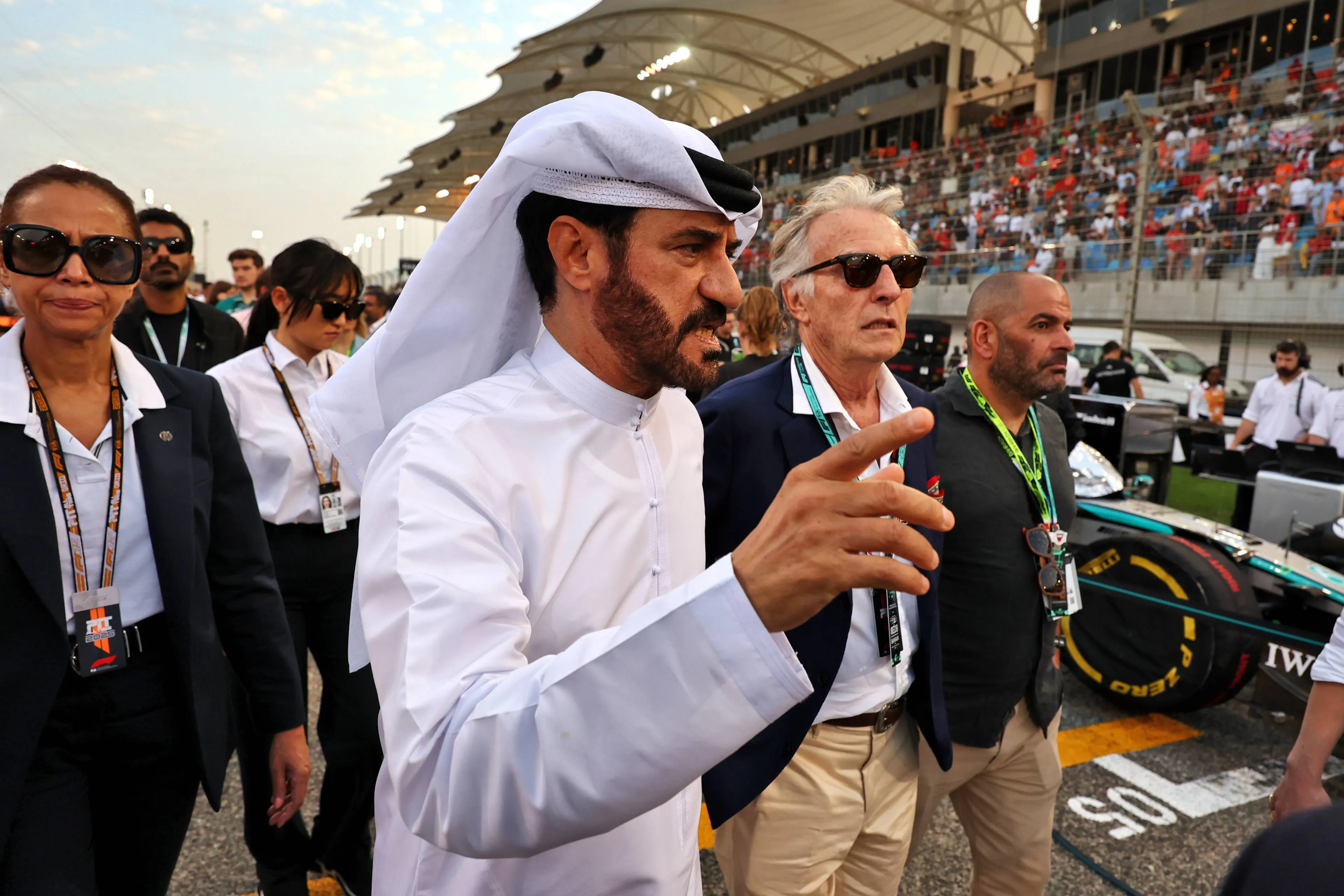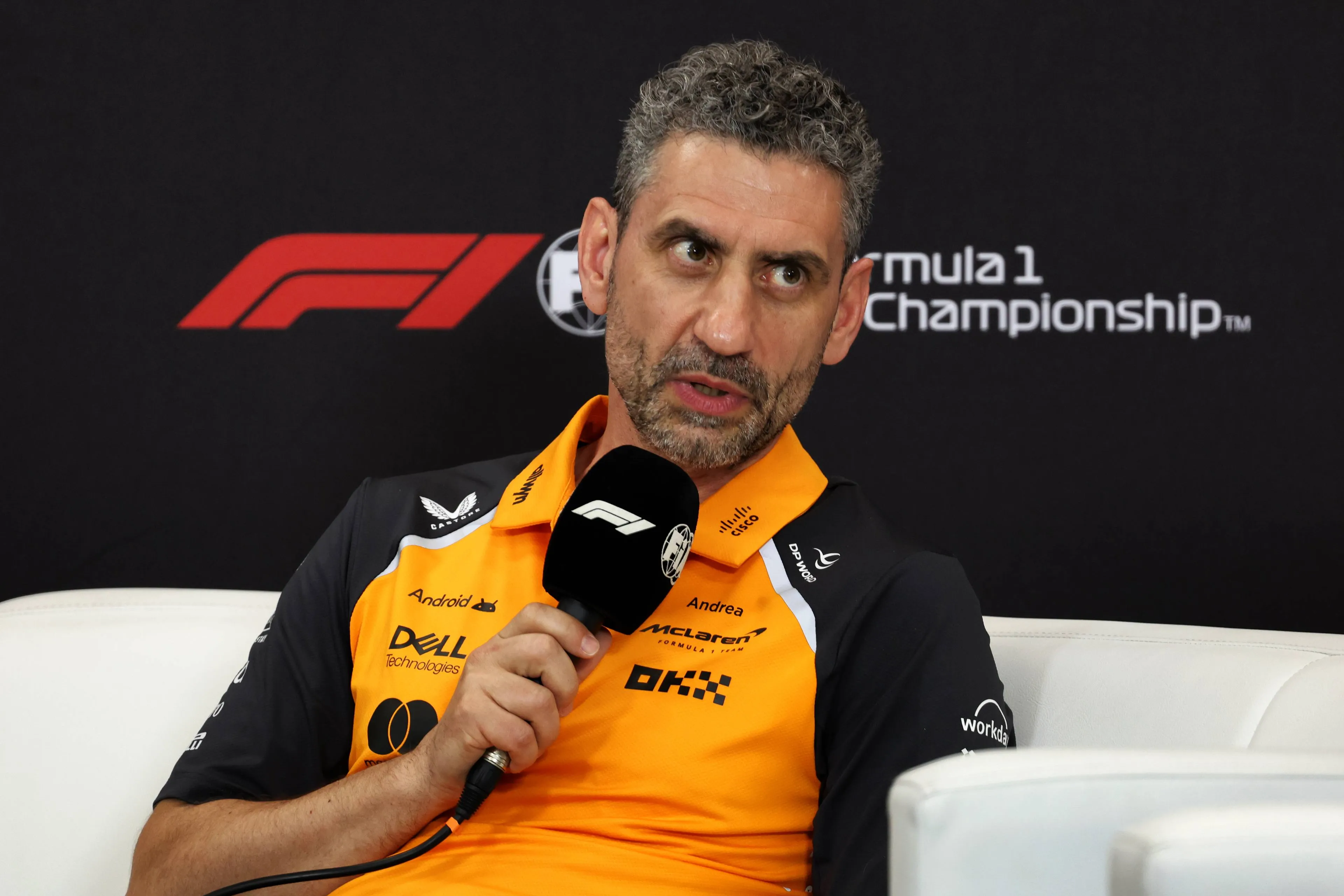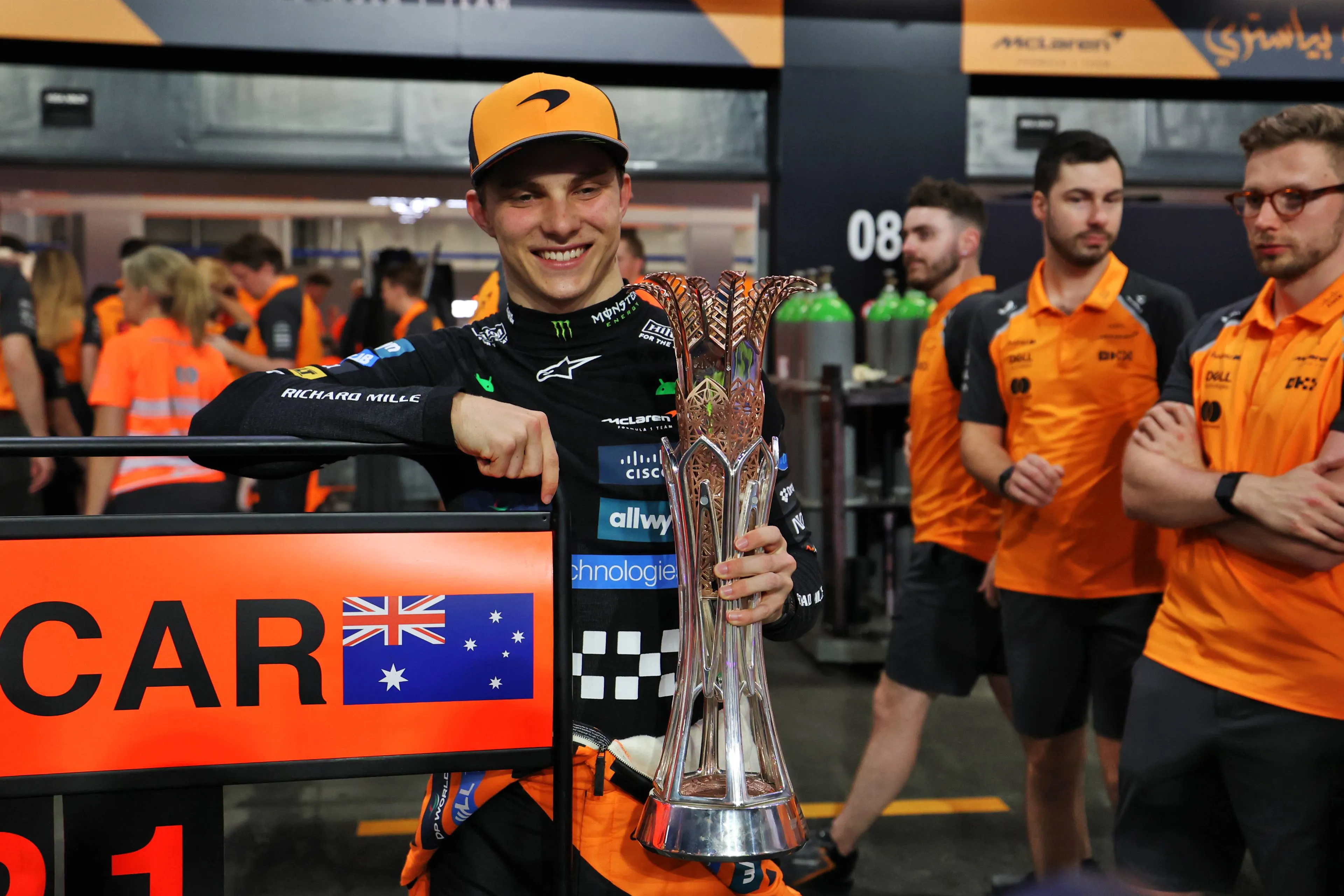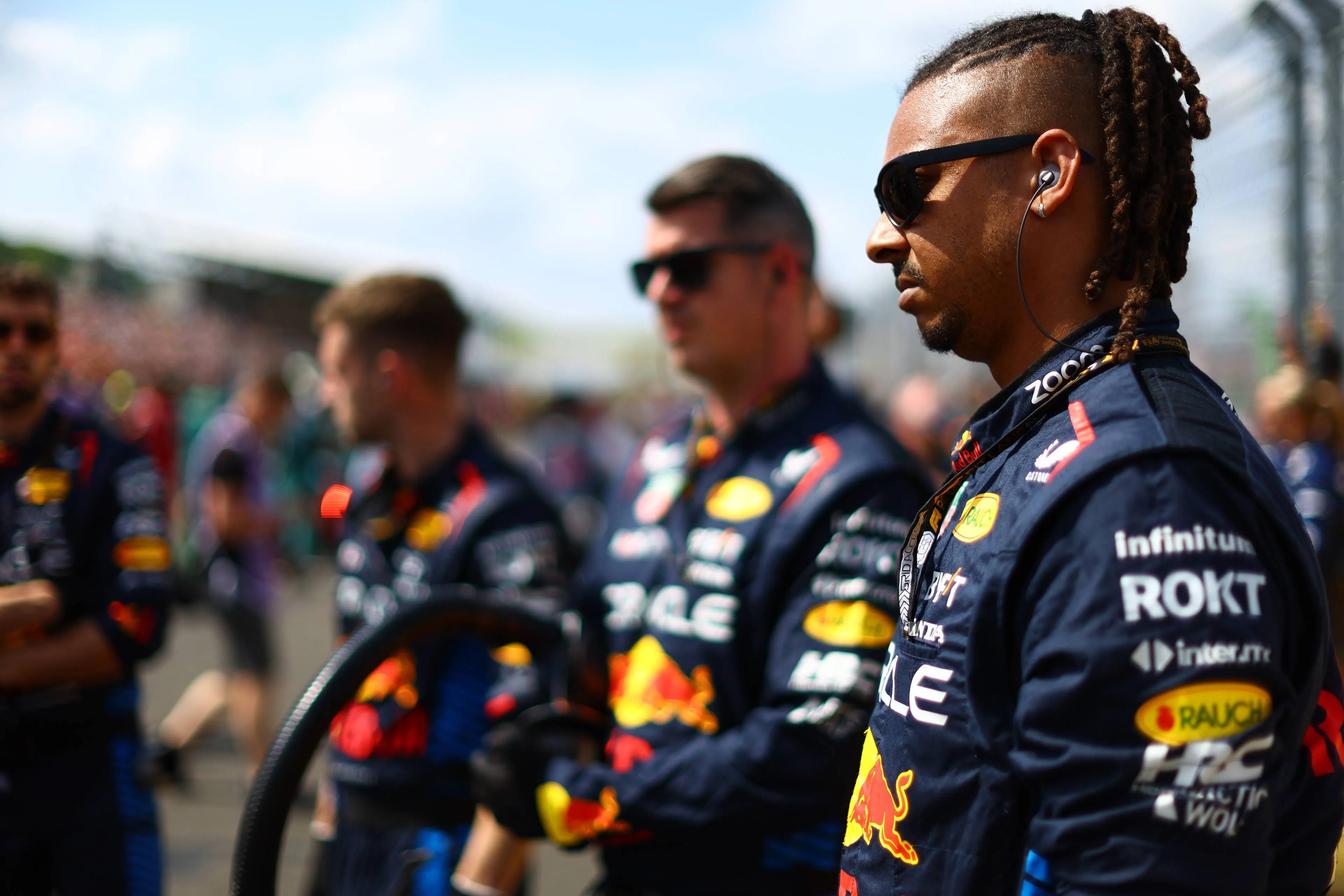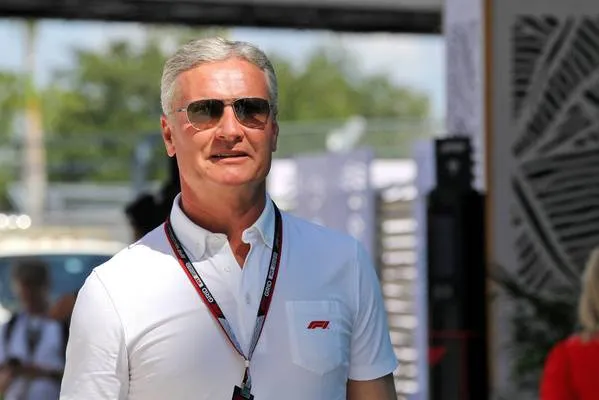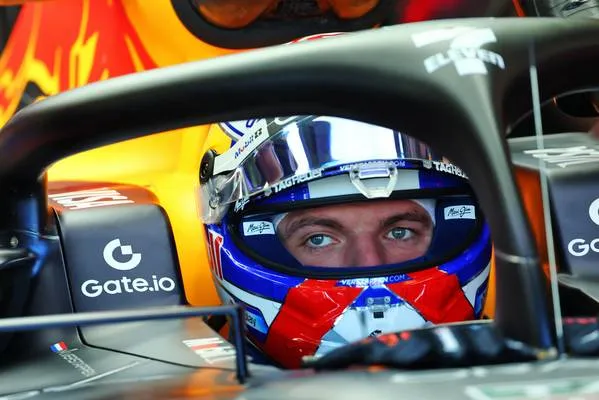The start of the season for Mercedes has been quite encouraging, as they showed off to be the second fastest team behind McLaren, on level terms with Max Verstappen and in front of Ferrari. The W16 is definitely a step forward compared to last year’s car, but still shows some weaknesses that can affect performance in specific conditions. Let’s try to explain why.
Is that front wing flexing regular?
Already since testing in Bahrain, it was visible that the W16 was a much more balanced and predictable car compared to the W15, proving that many problems from last season have been solved. While in 2024 the car struggled a lot in keeping the tyre in the right working window during qualifying, this year’s car is much better at exploiting the grip offered by the soft tyre over the single lap. Moreover, the overall balance of the car has improved, as it looked cleaner and calmer to drive, giving the drivers the chance to push it to the limit faster and achieve good results much more easily, especially in qualifying. This aspect was highlighted by Toto Wolff after the podium in Australia: “We have the car's balance now, which the previous one didn't have. On a single lap, we look solid.”
All these big improvements are also matched with a car that better responds to engineers’ inputs and changes between setups, giving them the opportunity to see if the results seen on the simulator are effectively those they see on track. However, the car still seems quite picky, with a small operating window that forces engineers to work hard and find all the right parameters that make the W16 enter that and exploit its full potential.
The reason behind this big step forward compared to 2024 definitely lays in a much deeper understanding of these ground effect regulations, but is also related to some aggressive solutions (both on the aerodynamics and mechanics) that the technical department led by James Allison have adopted for this season, both on the front and the rear of the car.
One of the main changes has been in the carbon fibre composites construction, as components are now able to flex much more than before. In fact, the W16 is one of the cars on the grid that takes the most advantage of this phenomenon on the front wing: as highlighted in the drawing below, the front wing is able to flex a lot when the car goes over 250/260 kph. This movement was already seen in Bahrain during testing, as the wing was bending a lot in straight-line. The two arrows in the drawing show that the flexing phenomenon makes the wing bend and reduce the amount of surface exposed to air, acting like a sort of DRS. This inevitably reduces drag, giving the W16 a great advantage over competitors especially in long straights and in high speed corners, where the front wing flexing affects the aerodynamic behaviour of the wing itself, modifying (in a positive way) the aero map through different corner phases, improving performance.

This aspect was already seen on last year’s McLaren MCL38, that developed this idea in an efficient way, gaining performance in the high speed corners by changing the airflow directed towards the bodywork of the car, gaining an advantage in terms of downforce generated.
The W16 front wing endplate shows off some interesting solutions as well, in particular at the connection to the two top flaps, in line with the path already taken by Mercedes during the second half of 2024. As highlighted in the drawing below, the metallic support that connects the two elements to the endplate has been completely designed to favour the outwash effect, i.e. to push the airflow towards the outside of the front tyre, drastically reducing drag. The metallic element, in fact, is characterised by a very wavy shape (orange arrow) along its entire length and in the central portion it has two small "channels" to push the air right outside the front wheel, as shown by the blue arrows. Furthermore, between these two channels there are some triangular-shaped winglets that aim at generating vortices that push the front tyre turbulence outwards. Finally, this metal element ends with a plate that has a proper flow diverter shape, which works in synergy with the rest of the support and with the endplate itself (red arrow).

This design seems to work greatly as the front wing flexes, reducing drag and thus making the car quicker in terms of top speed.
From this point of view, it’ll be particularly interesting to see if and eventually by how much the new technical directive introduced from the Spanish GP will have an impact on the W16 performance. For now, technical directives haven’t been made public yet, but it’s reported that the permitted level of flex will be reduced from 15 mm to 10 mm. This could be a disadvantage for the Brackley-based team’s car, that can lose some of its potential especially on tracks like Spa or Monza.
Slingshot traction and great top speed
Moreover, the W16 showed off two other strengths in China:
- a very solid and steady rear end, especially in slow corners and traction phases;
- high top speed at the end of the straights, mainly thanks to the high level of mechanical grip generated in traction that allows the team to adopt less loaded wings compared to other top teams (green arrow).
These two parameters are strictly related to each other: different from last season, the W16 seems to have a rear suspension that works really well (red arrows in the drawing below), not only making the aerodynamic platform work very well at different heights, but also producing a good mechanical grip that provides the car with a slingshot traction out of slow corners. This aspect was particularly evident in China, with Leclerc who really struggled to pass Russell despite being quicker.

That could especially be seen at the exit of the slow Turn 12, with Leclerc confessing to Sky Sport F1 after the race that: “the Mercedes out of turn 12 was a rocket ship, therefore impossible to overtake.”
Despite these big improvements, the W16 still suffers some weaknesses in some areas: first of all it has a very small operating window, thus is very difficult for engineers to find the right parameters and the right setup that makes the car enter this window. Secondly, the car still suffers a lot in hot temperatures and rear-limited layouts that put a lot of stress into the rear tyres, causing them to overheat. During the first two races of the season this aspect was visible especially in Australia and during Saturday’s Sprint race in China.
Toto Wolff himself denounced this issue after the race in Melbourne, saying that is probably related more to the mechanical design of the suspension rather than by a lack of downforce: “We have a deficit in keeping the tyres in the window. […] we are seeing a degradation because they are simply getting too hot. We're not missing 20 points in downforce. That's not the thing. It's just literally on the mechanical side, what can we do to keep these in the sweet spot.”
Last but not least, despite the great step forward done in terms of pure qualifying pace, the W16 seems to be much worse in terms of race pace on abrasive asphalts and on those layouts where the tyre degradation plays a big role during the race, like Bahrain. This was quite evident during the race in Australia, because when the intermediate tyre started degrading, Russell lost contact to Verstappen and started to lap almost 2 seconds slower than the two McLaren in front.
In China, in fact, the Britain told that they struggle the most on “a circuit where it's much more overheating, like we saw in Melbourne on the Intermediate tyres or like we saw in Bahrain testing.”
For this reason, Russell remains particularly cautious, conscious of the car’s limits on tyre management. The British driver knows well that in China his Mercedes performed well during the race due to the cooler conditions compared to Saturday, which favoured a one-stop strategy made possible by the low hard tyre wear.
This said, it’s also important to praise Russell’s start of the season, as he’s been driving like a top driver, making almost zero mistakes and performing when it really matters.
In conclusion, the W16 is probably not a car that can fight the MCL39, but has shown that in certain conditions it’s a step ahed to both Ferraris and Max Verstappen's Red Bull. Suzuka should be a favourable track for Mercedes, as the very efficient setup matched with the front-limited nature of the Japanese Circuit and the use of the hardest compounds that avoid overheating could represent a big asset for them, possibly leading to them being closer to McLaren.
Read more about:
Popular on GPBlog
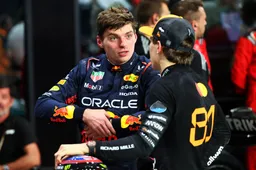
1
Ecclestone doesn't understand Verstappen's reaction: 'Why didn't he do that instead?'
933 times read
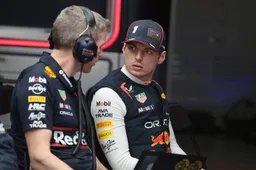
2
Former McLaren Mechanic Saw Verstappen and Red Bull Make the Right Decision
753 times read
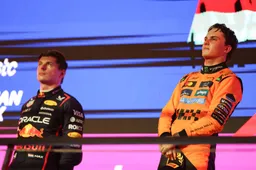
3
Windsor points to rule change after Turn 1 battle between Verstappen and Piastri
493 times read

4
Stella in line with Red Bull on 2026 engines? 'Common interests before our own'
479 times read
